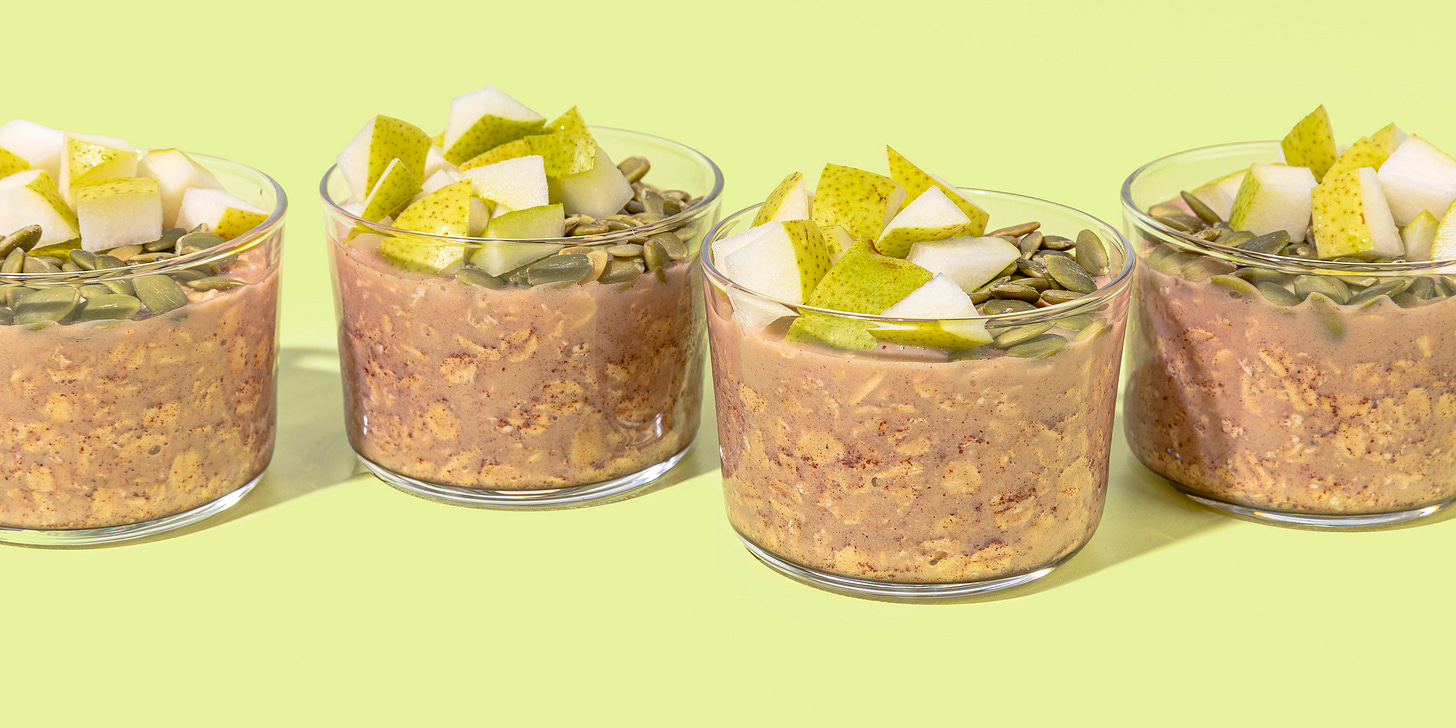If your evening routine includes some after-dinner doomscrolling on TikTok (because same), you’ve probably heard “fibermaxxing” pop up in your feed. But what exactly does it mean—and should you try it?
Never fear. We’ve got answers.
So, What Is Fibermaxxing?
Fibermaxxing is… exactly what it sounds like! Maximizing how much fiber you get in your diet each day by focusing on fiber-rich foods. Those foods include:
Beans & legumes like lima beans, chickpeas, and lentils
Grains like oats
Nuts & seeds like chia seeds, almonds, and quinoa—yes, quinoa! Though it’s prepared and eaten like a grain, it’s technically a seed
Fruits like apples, bananas, and raspberries (and avocados, too, but they’re one of those sneaky fruits that most people don’t think of as fruits)
Vegetables like sweet potatoes, Brussels sprouts, and artichokes
Notice what’s not on that list? Animal products. Fiber is an essential part of our daily diets that only plants can provide.
So, fibermaxxing = eating more plants. (AKA, fibermaxxing = our favorite thing!)
Why Are People Fibermaxxing?
Because people aren’t getting enough fiber.
According to the US Dietary Guidelines for 2020-2025, dietary fiber is one of the “dietary components of public health concern for the general U.S. population because low intakes are associated with health concerns.” (The other components of concern? Calcium, potassium, and vitamin D.)
Less than 10% of American adults get enough fiber. According to the dietary guidelines, over 90% of women and over 97% of men don’t meet the recommended intakes for dietary fiber. So, yeah, we’d call that a concern.
I know what you’re wondering—how much fiber is enough? Every person is different, but there are general guidelines based on gender and age. The guidelines are based on one overarching recommendation: for every 1,000 calories (kcal), you should aim for 14 grams of fiber. Our registered dietitian, Rachael, encourages people to aim for 25 to 30 grams a day.
If you’re interested in learning more about the US Dietary Guidelines, you can take a peek at the 2020-2025 guidelines here.
But What Does Fiber Do?
I checked in with Rachael to learn more about the benefits of a high fiber diet. Here’s her list:
Fiber fosters a happy, healthy gut microbiome 🦠
#2 (seriously, it helps you stay regular in the bathroom) 💩
Nutrients found in high-fiber foods help lower blood pressure 🩸
Soluble fiber—found in oats, legumes, and many fruits & veggies—helps reduce absorption of cholesterol, lowering LDL (“bad”) cholesterol, a major contributor to heart disease 🫀
Consuming adequate fiber can help regulate blood sugar levels by slowing down the absorption of sugar into the bloodstream, which is great for diabetes management (say whaaaat?!) 🍭
It keeps you feeling fuller for longer, giving you sustained energy levels 💪
Is Fibermaxxing Safe?
By and large, yes! Fiber is good for you, and you’re almost certainly not getting enough of it—so focusing on increasing your fiber intake is a smart idea.
If you have certain gastrointestinal (GI) conditions, like irritable bowel syndrome (IBS) or gastroparesis, a high-fiber diet may increase bloating or constipation, especially if you’re increasing your daily intake very quickly or eating foods high in FODMAPs. So, if you have any concerns about how fibermaxxing will impact your GI health, we recommend checking in with your doctor.
How Do I Start Fibermaxxing?
Rachael suggests starting slowly and gradually increasing your fiber intake over a few weeks. That should help you avoid some GI upset.
One of the great things about fiber being in so many different foods is that there are so many ways to add it to your diet! Oatmeal or chia pudding for breakfast, toasted almonds for a snack, a veggie-loaded grain bowl for lunch, a side salad with your dinner, some fruit to top your fave dessert (vanilla ice cream and berries will forever be my go-to): however you want to eat more plants, you can’t go wrong.
And if you want fibermaxxing to be even easier… that’s where Purple Carrot comes in.
“Our registered dietitian Rachael and team of chefs pack our menus with fiber-rich meals so you can hit your daily goals effortlessly—no spreadsheets, no second-guessing. We layer in all the plants your gut loves, so you don’t have to think about it.”
~ Our Culinary Director, Renée
In fact, over 90% of our menu is high fiber! (And for our extra curious foodies, the FDA standard for a high fiber meal is 10 grams or more.) A Purple Carrot meal a day has you well on your way to meeting your daily fiber intake goals for the week—no thought required, just like Renée said.
If you haven’t tried Purple Carrot yet, you can visit our website to get started today. And if you have—well, you might just be a fibermaxxing pro without even realizing it.







